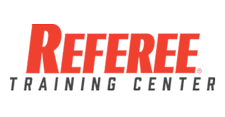In order to have an effective association, members must be “in the know” about the happenings of the group. They must be on the same page as far as critical issues. Communication is the key. Try the following steps to get the word out.
Step 1 — Determine what to relay.
Get the important news of your association to members. What does that include? Early on, that means you need to provide the bylaws and procedures. Those documents aren’t just important to board members. Rank-and-file officials should have them as well. You can’t make members read them, but by providing copies, at least you have done your part. In addition, provide information on meetings (time, location, agenda items, etc.), elections, camps/clinics, banquets, charity events and more. Don’t miss any important news, but also don’t overwhelm members to the point where they tune out during meetings or don’t open email communications.
Step 2 — Check the messenger.
In many associations, the messenger is the secretary. Others have the president or vice president take care of any communications. Regardless of the position title, it’s important that a competent, organized person is “the messenger.” A member who misses half the meetings and is late for the other half would not be someone you want keeping members in the loop.
Step 3 — Be clear.
It could be the greatest news in your association’s history, but if it’s lost in translation, your members will miss out. Keep news announcements at meetings clear and concise. Provide the key information, such as time, topic and location. Skip the details that don’t matter. If you are communicating electronically, have someone review what you typed to avoid mistakes.
Step 4 — Use technology.
Websites, email, Facebook and Twitter can be resources to spread your association’s message to members and beyond. Use those communication vehicles to announce your group’s next meeting, clinic or charity event. They will not only serve as a great way to get the initial announcement out. They are a resource where members who are forgetful or disorganized can go back and check details. In addition, websites and Facebook can help to draw in the community for special events.
Step 5 — Follow up.
Don’t assume members get the message the first time. Follow up with emails and other electronic announcements. That offers a greater chance members will receive the news and respond with attendance or participation.





